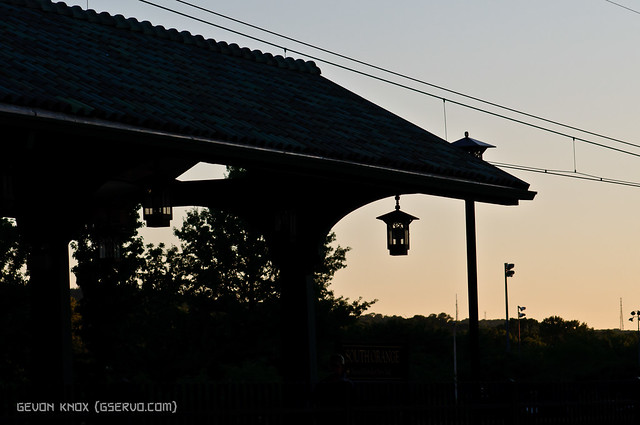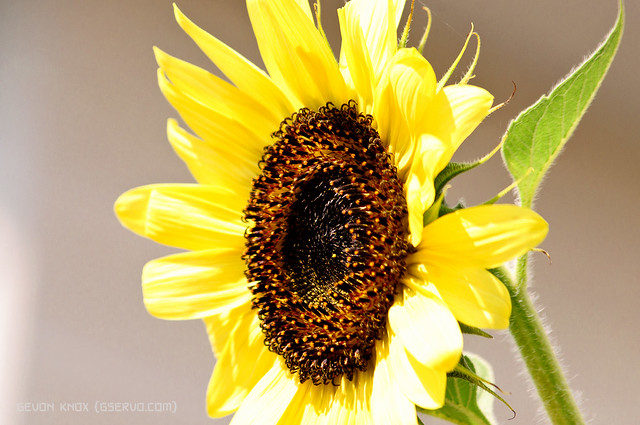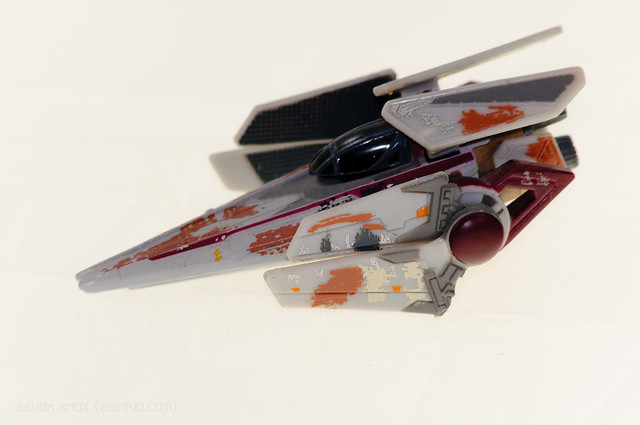Sigma 70 300mm F4-56 Dg Macro Samples Review

Ane thing that I have I've learned in photography is to always carry a zoom lens. If you shoot photos for fun or you get paid for creating compelling photographs, yous will find need for a zoom lens. There are spots you just can't accomplish and things y'all cannot get shut to. A zoom lens will afford you that opportunity. Though my Nikon 35mm F1.viii remains my favorite lens and is nigh always on my D90, the Sigma 70-300mm F4-5.6 DG Macro is past my side oftentimes now.
Specifications
| Lens Construction | fourteen Elements in 10 Groups | ||||||||
| Angle of View | 34.3º-8.2º | ||||||||
| Number of Diaphragm Blades | 9 | ||||||||
| Mininum Aperture | f22-32 | ||||||||
| Minimum Focusing Distance | 150*(95) cm / 59.1*(37.iv) in | ||||||||
| Filter Size (mm) | 58 | ||||||||
| Maximum Magnifications | ane:4 | ||||||||
| Dimensions (Diameter 10 Length) | 76.vi x 119.5 mm/3.0 ten 4.7 in | ||||||||
| Extended Dimensions | 208.thirty mm / 8.2 in | ||||||||
| Weight | 530g / xviii.7oz. | ||||||||
| Corresponding Mounts |
| ||||||||
| (3) Pentax mount lenses cannot be used with SF series AF cameras. | |||||||||
Lens Construction
The company line reads as such: Sigma'south 70-300mm F4-v.6 DG Macro is a compact telephoto zoom lens. With a range that is useful for candid portraiture, capturing children playing in the lawn, amateur sports or fifty-fifty wild animals at the zoo this lens is usually the lens that photographers reach for starting time. Information technology'south great on vacation for capturing scenic details or even groups of flowers in a garden. The Sigma lxx-300mm offers a 4:1 zoom ratio in a compact lens that is easily carried in your camera purse or left on the camera every bit you travel; and the images are magnificent.
My first zoom DSLR lens was actually a Sigma 70-300mm F4-5.6 G ( R.I.P.) Information technology fell victim to a iii twelvemonth old and had to get replaced by the folks at Sigma. The replacement lens was Sigma seventy-300mm F4-five.6 DG macro. Information technology is designed for use with full frame digital SLR cameras, just also has the ability to be used with smaller APS-C size sensors with a equivalent effectual increase in focal length to about a 100 to 450mm and a minimum focusing distance of 59 inches assuasive macro photography with a maximum magnification of i:2. The lens comes packaged with a lens hood. It is a compact size and weighs about 19.4 oz and nearly iv.8 inches in length and has a Filter Size of 58mm.
This lens is intended for the not pros, the hobbyist or those learning. It's not a lens y'all would apply on a professional shoot due the speed. It is built well though. The two toggle switches on the main barrel of the lens are well positioned and in-line with each other, so you really don't take to look at them to use them. Everything is labeled well. With the lens hood on reversed there is an extra layer of protection added to the lens—peculiarly if information technology's held in a lens pouch when not in employ.
Physically, for the normal person, it's non the lightest of lenses. The Sigma lxx-300 DG Macro has an unbalanced, forepart heavy weight to information technology. The reason for this is because of the optics on the inside. This lens has 14 elements in 10 groups including a special low dispersion glass element in the front end lens group, and one in the rear lens grouping..
I do like the texture on the lens body compared to the Sigma seventy-300 G. I experience like it will not slip out your hands. I would not take this lens into a loftier action surface area though, if y'all have the lens extended—it would simply be in the fashion, especially if you had the lens hood on. Information technology's meant to exist kept at a altitude. Farther, I would not accept this into a really crowed surface area. This lens needs room, particularly if set to Macro and locked out between 200mm and 300mm
Autofocus
The motor is built into the lens and tin autofocus with all Nikon DSLR cameras including the D40, D40x, etc, discarding of traditional Nikon screw focusing. The best part of this lens to me is the Macro images. The focus in that fashion is slow and noisy, only with patience it allows for great shots. The worst office of this lens is its slow and laggy functioning hand held in low ambient low-cal, especially when information technology comes to focusing. Over all though, for the cost of the lens the autofocus is adequate.
Sharpness
In dainty and bright ambience light, the lens is abrupt all the way through the zoom range. If you are discipline to low ambient light the sharpness decreases particularly when hand held. If you have a lot of fourth dimension to compose you shot and steady your lens, such as if yous were using a tripod, you tin get some fantastic shots.
In Apply

My initial impression of the Sigma 70-300mm f/iv-5.6 DG Macro Telephoto Zoom Lens was weird. I was accepted to using my old Sigma 70-300mm F4-5.6 G, so on first use of lens, I was thrown aback by the change in performance of the lens. The autofocus is slower, and the images created were soft. I did use information technology early in the morning just before sunrise, so it was not the all-time light for this lens. My first test of the macro part on this lens was squeamish though. Macro was something I ever wanted to play with so I was happy with that.
Photo meditation (the process of taking photos to relax) with the D90 and Sigma 70-300mm F4-5.6 DG Macro combination in decent light was a huge improvement on my first use of the lens. In daylight, this lens works very well. Over again, the autofocus is not the fastest, but information technology was workable. If I took my time, and adjusted my Nikon D90 properly, I was able to achieve decent speed on my shots. Considering of this, it is a good and affordable walkaround lens.

On as bright day this lens is not bad at all. I took it on a local group Photo walk and got a bang-up operation with the Sigma 70-300mm F4-five.6 DG Macro. Being able to switch to macro at times to become close to subjects gave me more versatility in my shots. Going from 70-300mm (constructive 100-400mm) gave me a great range of shots without having to become too shut to subjects. It made for an interesting drove of images.
Twenty-four hours 1 Conclusions
This is a very versatile lens, particularly for the budget minded and the macro is fun to employ, peculiarly with toys—that's the geek in me talking. It's not the all-time lens for a professional but if you are starting out in photography, or accept depression upkeep this lens is a decent option. The lens needs a fiddling finesse and practice in its use. Once you lot work out how you are going to use it, its performance does ameliorate.
For me, I would use this lens for long distance scenery, wild life and macro shots. I've tried using the The Sigma lxx-300 DG Macro for portraits, and it could work, just I would not apply it for that. For portraits I would prefer the a 50mm prime or an 85mm prime. The Lens is great on a photo walk though, for candid well lit street shots , especially at distance.
Would I recommend this lens? So far, yes—but I besides recommend trying Nikon DX/FX lenses or Catechism EF/EF-Due south lenses etc.
More to come every bit the lens is tested in various situations.
Gallery


Please Support the Phoblographer
We honey to bring you guys the latest and greatest news and gear related stuff. Still, we can't keep doing that unless nosotros have your connected support. If you would like to buy any of the items mentioned, please do so by clicking our links kickoff then purchasing the items equally nosotros and then get a small portion of the auction to help run the website.
rignallwitivelittly.blogspot.com
Source: https://www.thephoblographer.com/2010/07/29/field-review-sigma-70-300mm-f4-5-6-dg-macro-day-1/


